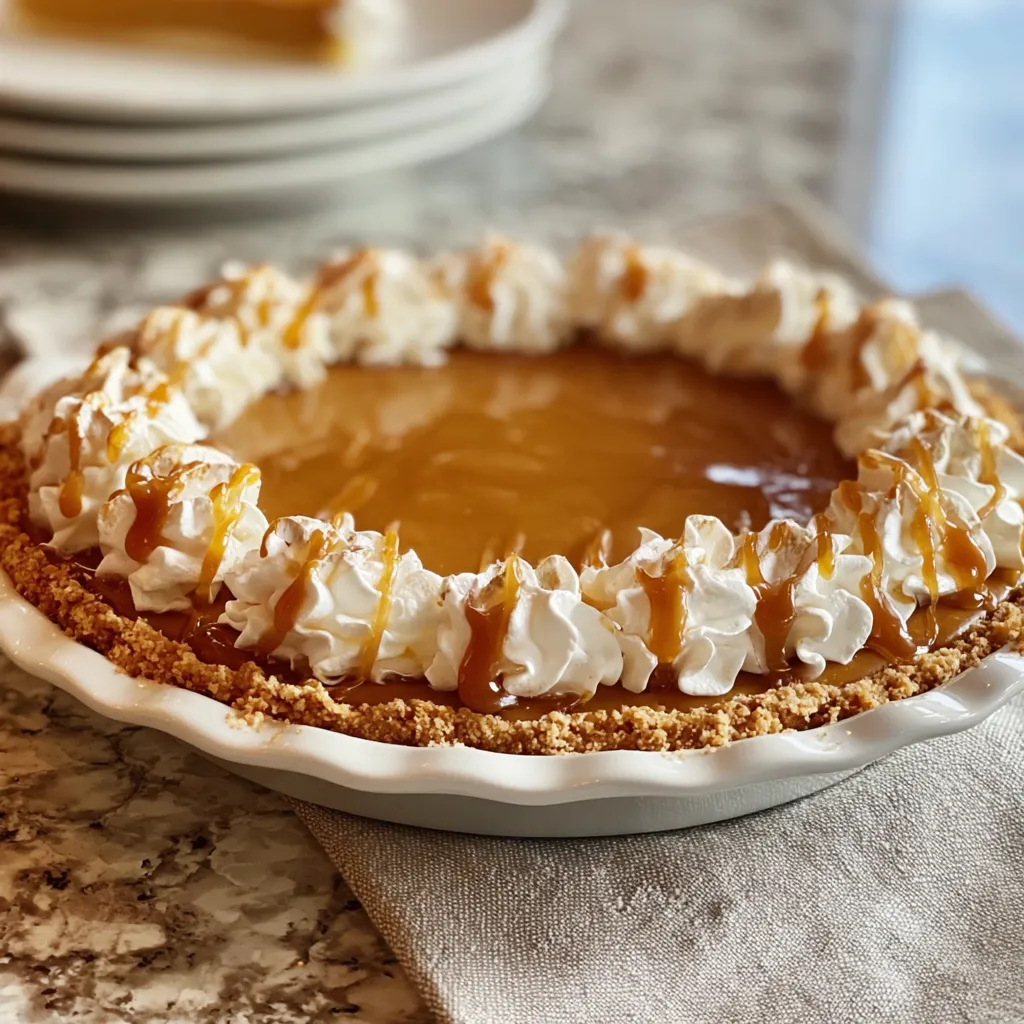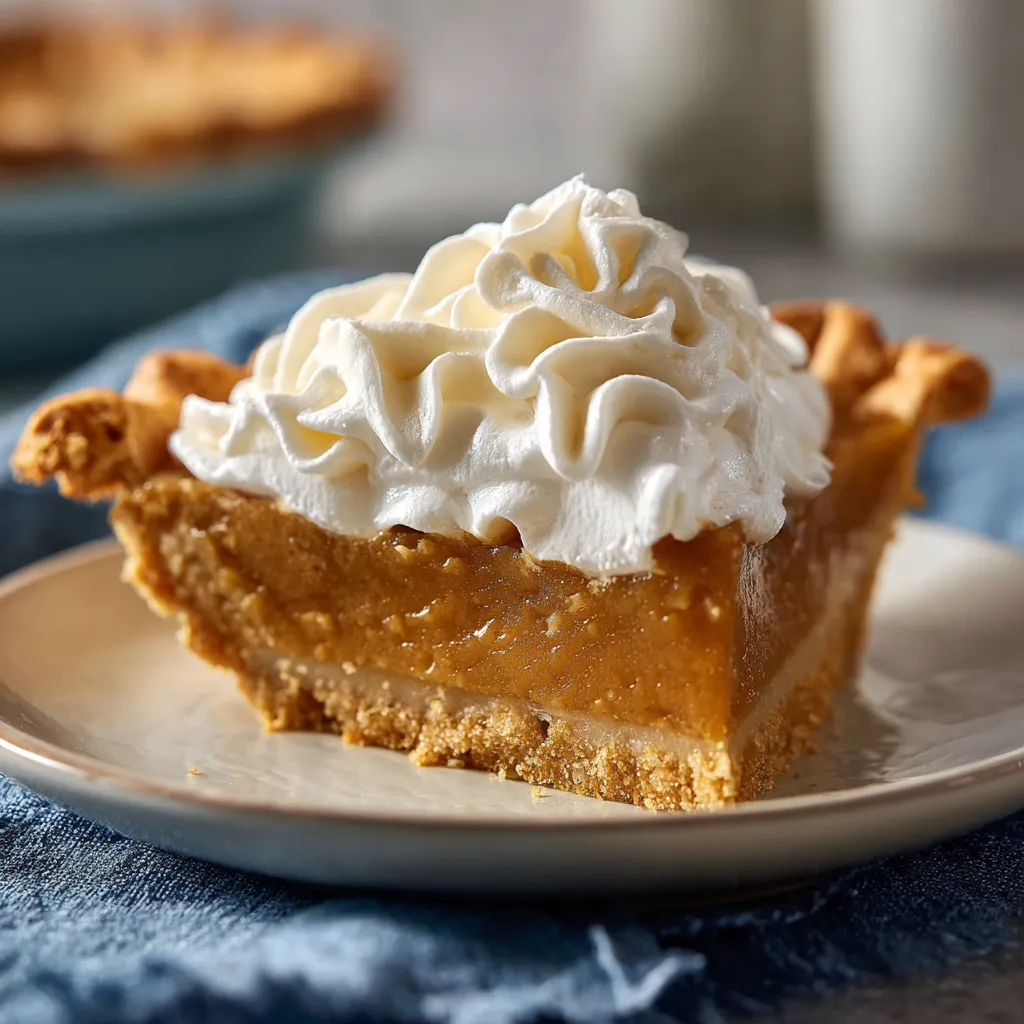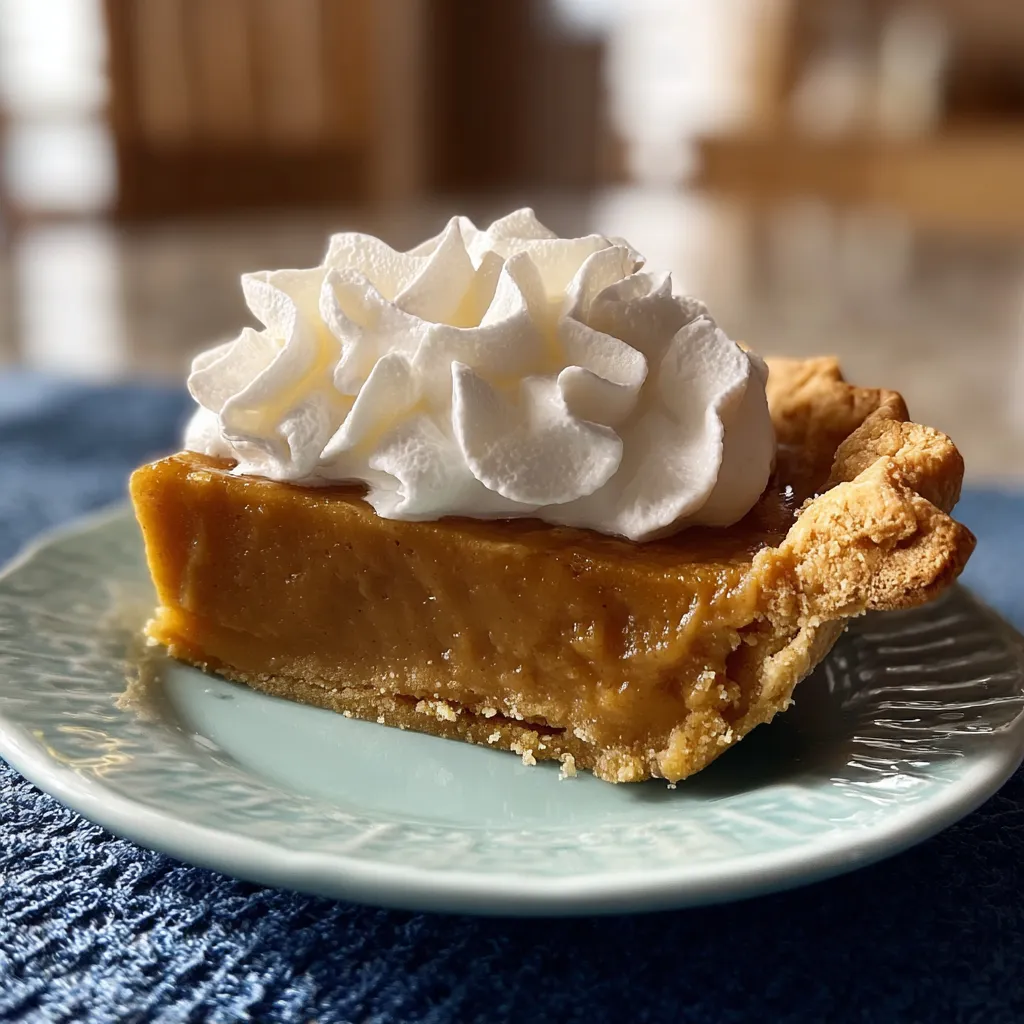 Pin it
Pin it
Dolly Parton’s Butterscotch Pie is the kind of recipe that wraps a home in comfort. The old-fashioned butterscotch filling tempers sweet and buttery notes with a slight hint of salt, all crowned with a mountain of soft meringue. Every bite delivers a taste of nostalgia that makes it perfect for celebrations and Sunday dinners alike.
I love this recipe because the first time I made it, the butterscotch aroma drew everyone into the kitchen. The pie disappeared before it had a chance to properly cool and now it is my top pick when I want to treat friends or celebrate a family milestone.
Ingredients
- Prebaked pie crust: Choose a sturdy crust to hold the silky filling. I usually buy or make a flaky 9 inch pie shell and let it cool before using.
- Brown sugar: Essential for the deep and caramel like flavor. Choose a fresh soft batch for best results.
- All purpose flour: Thickens the filling and ensures a smooth consistency. Sift it for a lump free filling.
- Salt: Balances the sugary sweetness. Always use a fine grain so it dissolves into the mixture.
- Whole milk: Adds body and extra creaminess. Go for a full fat milk rather than low fat for a richer texture.
- Unsalted butter: Gives the filling buttery depth. Use high quality real butter.
- Egg yolks: Provide richness and help thicken the custard. Use fresh eggs and separate carefully to avoid streaks of white.
- Vanilla extract: Rounds out the flavor with a gentle sweetness. Real vanilla makes a difference here.
- Egg whites: For the meringue. Light and fluffy peaks need fresh eggs with no fat traces.
- Cream of tartar: Stabilizes the meringue. Look for a powder that clumps easily for freshness.
- Granulated sugar: Sweetens the meringue and helps create glossy peaks. Use fine sugar for faster dissolving.
Step-by-Step Instructions
- Make the Butterscotch Base:
- Combine brown sugar, flour, and salt in a heavy bottomed saucepan over medium heat. Stir gently and let the mixture warm up for two to three minutes. Slow cooking this mixture helps the sugar begin to caramelize slightly and the flour to toast.
- Add Milk:
- Pour the whole milk into the dry ingredients in a thin stream. Whisk steadily as you add to prevent any lumps. Once all the milk is in, keep whisking for three to five minutes. The mixture should feel much smoother.
- Melt the Butter:
- Drop in the unsalted butter. Cut it into a few pieces for even melting. Stir and let the butter become fully incorporated. The surface will look shiny and silky.
- Temper the Egg Yolks:
- In a separate bowl, beat the egg yolks. Gently ladle a couple spoonfuls of the hot butterscotch mixture into the egg yolks, whisking constantly. This raises their temperature gently and avoids curdling.
- Combine and Cook:
- Pour the warmed yolk mixture back into the saucepan. Stir constantly and keep the heat medium low. Cook for another two to three minutes until the filling becomes thick and pudding like. Do not walk away at this step or risk burning.
- Finish with Vanilla:
- Take off the heat and stir in the vanilla extract. The aroma at this point is pure magic.
- Fill the Crust:
- Pour the hot butterscotch filling into your pre baked pie crust. Tap the pan gently on the counter to even out the filling. Let it cool for about ten minutes while you prepare your meringue.
- Make the Meringue:
- In a perfectly clean dry bowl, start beating egg whites and cream of tartar on low speed. Gradually increase to high when you see bubbles forming. Beat until you see soft peaks. Very slowly sprinkle in the sugar while beating until stiff shiny peaks form. This takes patience but is well worth it.
- Top the Pie:
- Spread the meringue evenly over the filling. Use a spoon or spatula to make swirling peaks. Take care to press the meringue right up to the crust edge to prevent it from shrinking during baking.
- Bake and Finish:
- Slide the pie into a preheated oven at 350 degrees F. Bake for twelve to fifteen minutes or until the meringue is golden and lightly toasted. Watch closely in the last couple of minutes. Remove and let the pie cool before slicing.
 Pin it
Pin it
I absolutely treasure the vanilla extract in this pie. The real vanilla provides that little extra something. I remember making this recipe for my mother’s birthday. She swears she has never had a better butterscotch flavor in her life.
Storage Tips
This pie is at its best on the day it is baked, but if you have leftovers, store them lightly covered with plastic wrap in the refrigerator. The meringue might weep slightly after a day or two but the pie will remain delicious for up to three days. If you want to avoid meringue shrinking, store the whole pie in a cool part of the fridge and avoid covering too tightly.
Ingredient Substitutions
If you need a gluten free version, you can replace the all purpose flour with a gluten free blend or cornstarch. Use almond milk or another creamy plant milk if you want to avoid dairy, but stick with full fat options for best texture. You can swap dark brown sugar for a bolder toffee note or try a graham cracker crust for extra crunch.
Serving Suggestions
Serve this pie slightly chilled or at room temperature. Add a dollop of whipped cream or a drizzle of caramel for extra indulgence. Some people love to sprinkle a few flakes of sea salt on top to balance the sweetness. This pie pairs well with coffee after dinner or as a show stopping dessert at brunch.
Cultural or Historical Context
Butterscotch pies like this one have deep roots in Southern baking traditions. The recipe has evolved with family tweaks, but the core is pure old fashioned comfort. Sharing a slice feels like passing along a piece of Americana and a touch of grandparent wisdom.
 Pin it
Pin it
This dessert brings wholesome nostalgia with every bite. It’s the perfect way to end a meal on a sweet high note.
Frequently Asked Questions
- → What makes the butterscotch flavor so rich?
The combination of brown sugar cooked gently with butter, milk, and vanilla creates deep caramel notes and a smooth, creamy texture.
- → How can I prevent my crust from getting soggy?
Ensure the pie crust is fully pre-baked and let the butterscotch filling cool slightly before pouring it in to help maintain crispness.
- → Why is tempering egg yolks important?
Tempering prevents the yolks from scrambling, leading to a smooth, custardy filling without lumps.
- → How do I achieve a perfect meringue topping?
Beat egg whites until soft peaks form, then add sugar gradually until stiff, glossy peaks appear, and spread evenly to seal the edges.
- → How do I know when the pie is ready to come out of the oven?
The meringue should be golden brown and set on top, which usually takes 12-15 minutes at 350°F (175°C).
